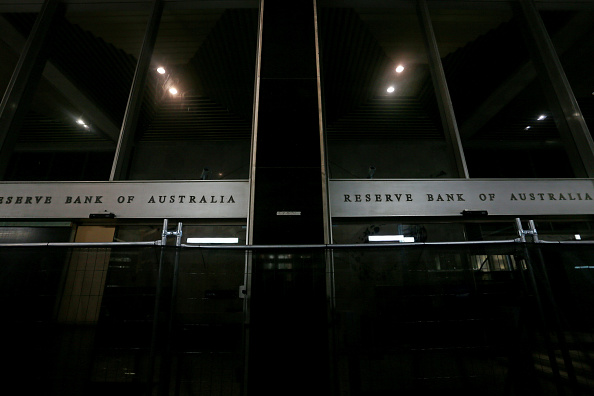Economy ‘on life support’ as inflation, high interest rates bite
June quarter figures show GDP per capita fell 0.4%, mirroring March quarter figures and aligning with widespread economist expectations of a continuation of the per capita recession.
Deloitte Access Economics partner Stephen Smith said the findings “will come as no surprise” to struggling households.
Meanwhile, GDP was up 0.2% in the June quarter – an eleventh consecutive period of growth.
Excluding the Covid-19 pandemic, ABS head of national accounts Katherine Keenan confirmed economic growth during 2023-24 was its slowest since 1991-92.
Mr Smith agreed the Australian economy remains “on life support” and noted inflationary pressures continue to bite.
The ABS said the weak growth overall reflects “subdued household demand” with consumption detracting 0.1 percentage points from GDP this quarter.
A lack of discretionary spending is behind this – a problem likely to continue impacting figures as inflation persists and consumers bunker down amid high interest rates.
“The economy has likely reached the bottom of the trough,” Mr Smith said. “Remaining vigilant about inflation is an important priority, but today’s figures show that the economic discussion in Australia needs to shift."
What about interest rates?
Expectations that interest rates have peaked remain in light of the new data, PropTrack economist Anne Flaherty told Mortgage Choice.
“The fact that our economy has now been shrinking on a per capita basis for six consecutive quarters is definitely a concern," she said. "We haven't seen this level of persistent negative per capita economic growth in many decades.”

Mr Smith was stronger in the view that the ABS data shows rates have peaked.
“It will be fascinating to actually see what the Reserve Bank does at the end of the month,” Ms Flaherty added.
“The expectation, of course, is that rates will not move, but it will be really interesting to see what is highlighted given what we are seeing in the broader economy.”
Households still struggling
Essential spending – including rent and other dwelling services – was up 0.5% in the quarter.
Ms Flaherty said the figures are a further reminder that households are struggling day-to-day.
“Most of people’s income is being spent on housing costs, whether that be higher rent or higher mortgages, so the fact that we're continuing to see sluggish economic growth and seeing households very constrained is not a shock.”
For first-home buyers, Flaherty said the outlook remains “incredibly difficult”.
“The fact that we are continuing to see households struggling to save means that for those people who are in the process of saving a deposit for a first home, that process is taking a very long time.”

The picture is equally as dull for homeowners, she added.
“A lot have very little leftover after accounting for their mortgage repayments and just the general cost of living and figures suggest that we might see more households continue to struggle.”
Chalmers: Data ‘clearly shows pressure’
Treasurer Jim Chalmers said “persistent but moderating inflation” was behind the small uptick in growth for the economy, along with continued economic uncertainties on a global scale.
“This combination of challenges is weighing heavily on households,” Mr Chalmers said. “This data clearly shows the pressures people are under.
“We expected quarterly growth to be weak and that’s what we’ve seen.”
The treasurer also pushed back on naysayers, adding the latest findings from the ABS show the Labor government was justified in its federal budget measures.
“Our economic plan is all about fighting inflation without smashing an economy which is already weak,” Mr Chalmers added.
In the run up to this latest health check of the Australian economy, shadow treasurer Angus Taylor had accused Mr Chalmers of ignoring homegrown inflation and instead was focusing his efforts on picking fights with the RBA.
Speaking earlier this week on Sky News, Mr Taylor addressed the treasurer’s comments that successive rate rises had “smashed the economy”, continuing the opposition’s rhetoric that Mr Chalmers is pushing blame around.

“He is fighting everybody and everything,” Mr Taylor said. “He is not fighting the one thing everyone wants him to deal with, which is his own homegrown inflation.”
The comments came after Mr Chalmers appeared to lay the blame of sluggish growth at the feet of the RBA earlier this week, saying his government was actively trying to balance the effects of high interest rates on Australians while attempting to stabilise inflation.
Mr Taylor doubled down in response to the latest figures and said Australians remain “crushed by Labor’s economic failure”.
“This looks, feels and smells like a recession,” he said. “Labor has failed to manage inflation and has failed to manage the economy. They have put Australia on a path to ruin, not recovery.”
Cautious optimism ahead
While the June figures are largely a doom and gloom continuation of the last quarter, Mr Smith said “some green shoots in the economy” are appearing.
“The stage 3 tax cuts will add around one percentage point to real household income growth in the coming year, while support payments to households like energy bill subsidies will put money back in the pockets of consumers, offering some support to retail and wholesale industries.”

On the building front, figures show dwelling investment increased by 0.1% thanks to a +2.5% boost from new houses with the ABS noting an increased number of new homes reaching completion in the June quarter.
This is no doubt welcome news for a sector continuing to grapple with severe labour shortages and increased building costs.
Ms Flaherty agreed the continuing economic growth, while meagre, is a silver lining worth dwelling on.
“We have had strong population growth,” she said. “Headline economic growth is positive and that's because we have more people, which creates more consumption and more demand.
“That's actually keeping our head above water at the moment.”


